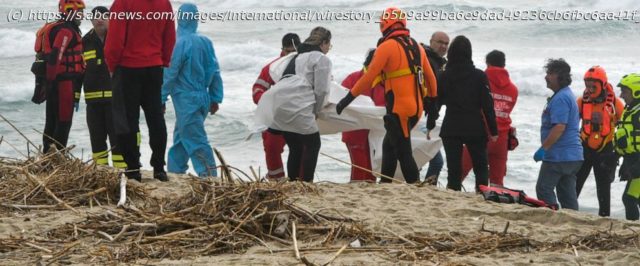Array
DI CUTRO, Italy “Italy here we come!” cheered the young men, in Urdu and Pashto, as they filmed themselves standing on a boat sailing in bright blue waters.
They were among around 180 migrants — Afghans, Pakistanis, Syrians, Iranians, Palestinians, Somalis and others — who left Turkey hoping for a better, or simply safer, life in Europe.
Days later, dozens of them were dead. So far, 70 bodies have been recovered from the Feb. 26 shipwreck near the small beach town of Steccato di Cutro, but only 80 survivors have been found, indicating that the death toll was higher, some of the victims’ bodies lost in the Ionian Sea.
The tragedy has highlighted the lesser-known migration route from Turkey to Italy. It also brought into focus hardening Italian and European migration policies, which have since 2015 shifted away from search and rescue, prioritizing instead border surveillance. Questions are also being asked of the Italian government about why the coast guard wasn’t deployed until it was too late.
Based on court documents, testimony from survivors and relatives and statements by authorities, the AP has reconstructed what is known of the events that led to the shipwreck and the questions left unanswered.
___
THE FATEFUL JOURNEY
In the early hours of Wednesday, Feb. 22, the migrants — including dozens of families with small children — boarded a leisure boat on a beach near Izmir following a truck journey from Istanbul and a forest crossing by foot.
They set out from the shore. But just three hours into their voyage, the vessel suffered an engine failure. Still in high seas, an old wooden gulet — a traditional Turkish style of boat — arrived as a replacement.
The smugglers and their assistants told the migrants to hide below deck as they continued on their journey west. Without life vests or seats, they crammed on the floor, going out for air, or to relieve themselves, only briefly. Survivors said the second boat also had engine problems, stopping several times along the way.
Three days later, on Saturday, Feb. 25, at 10:26 p.m. a European Union Border and Coast Guard plane patrolling the Ionian sea spotted a boat heading toward the Italian coast. The agency, known as Frontex, said the vessel “showed no signs of distress” and was navigating at 6 knots, with “good” buoyancy.
Frontex sent an email to Italian authorities at 11:03 p.m. reporting one person on the upper deck and possibly more people below, detected by thermal cameras. No lifejackets could be seen. The email also mentioned that a satellite phone call had been made from the boat to Turkey.
In response to the Frontex sighting, the case was classified as an “activity of the maritime police”. Italy’s Guardia di Finanza, or financial police, which also has a border and customs role, dispatched two patrols to “intercept the vessel.






